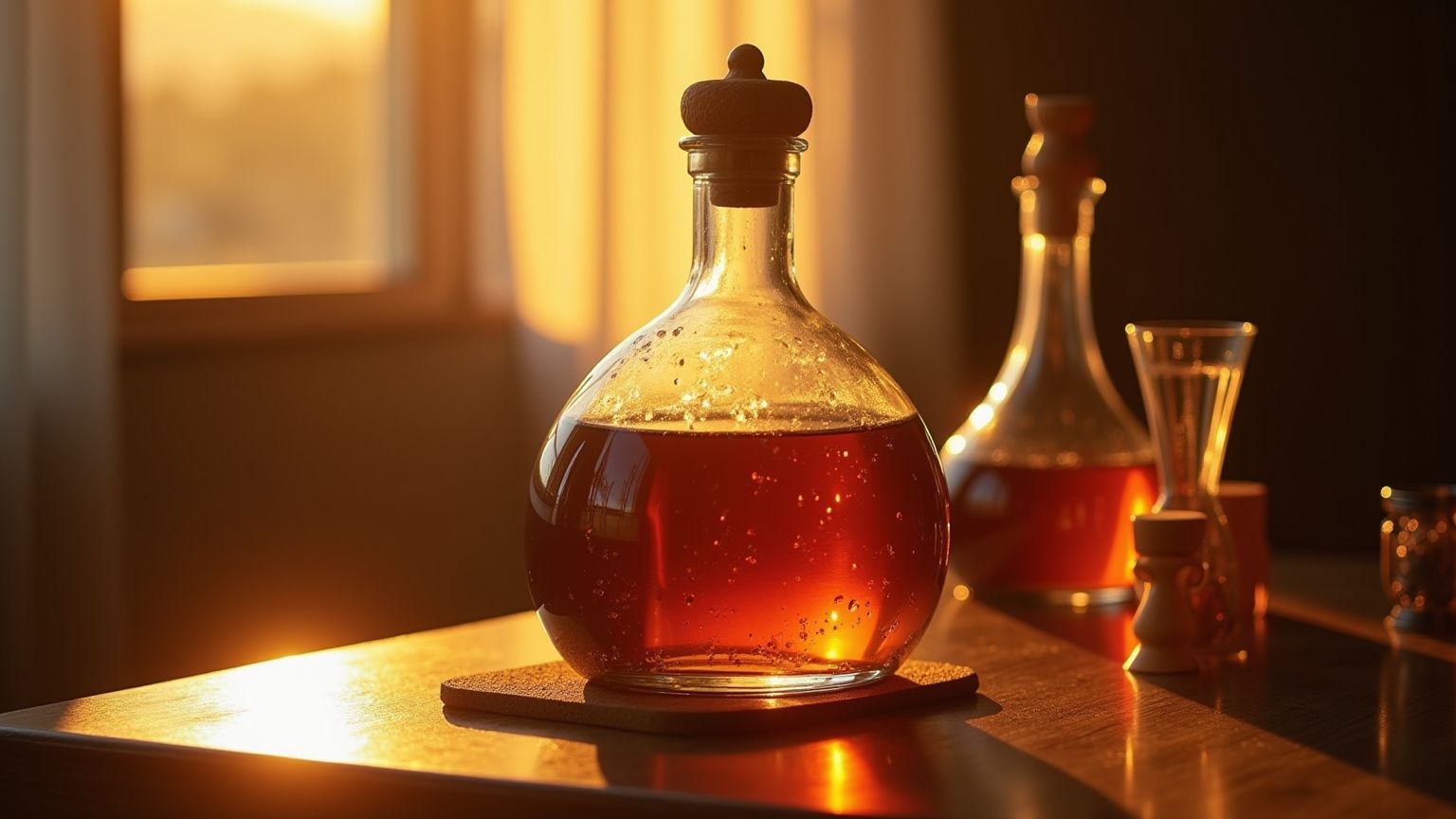A Local’s Guide to Greek Liquor And Generally Greek Spirits: Discover the Essential Drinks of Greece
Man, after 20+ years showing folks around Greece, I've seen it all – wide-eyed tourists taking their first sip of Greek liquor, watching their faces scrunch up at tsipouro's kick, and that magical moment when they discover mastiha. Greek liquor isn't just something to drink – it's basically our cultural DNA, soaked into everyday life and every celebration worth having.
When I'm dragging visitors through Athens' chaotic streets or across those postcard-perfect Aegean islands, I always tell them: if you want to get Greece, you gotta understand our booze. Each bottle of Greek liquor tells a story – our history, our regional quirks, and what grows in our wildly different landscapes.
This guide? It's everything I've picked up from years of food tours, late-night chats with crusty old distillers, and countless evenings in tavernas where Greek liquor flows like water. Let me walk you with you through the must-try spirits of Greece – not just what to drink, but how to drink it without screaming "tourist!"

Ouzo: Greece's Iconic Anise Spirit
Ouzo is the rock star of Greek liquor – instantly recognizable by that licorice punch and the magic cloudy transformation when you add water. Growing up in a family that made homemade hooch, I promise you ouzo isn't just another bottle on the shelf – it's practically a religion here.
The Essence of Ouzo
This Greek liquor comes from grape must – all the leftover bits from winemaking – and gets its signature flavor from anise, though producers often throw in other aromatics like star anise, fennel, coriander, cloves, or cinnamon. By law, ouzo must be at least 20% alcohol, but most commercial stuff hits between 37-45%.
The coolest part? That "louche effect" – when water hits the clear Greek liquor and BOOM – it turns milky white as the essential oils separate. Not just a cool bar trick – it's actually how you're supposed to serve the stuff.
Regional Variations
In my years leading booze tours, I've noticed how Greek liquor varies wildly across different regions:
• Lesvos (Mytilene): The undisputed heavyweight champion of ouzo production. The Greek liquor from here is silky smooth with complex aromas. Some distilleries have been at it for over 100 years! When I take folks to Lesvos, we always hit Plomari – home to some seriously respected ouzo brands.
• Tyrnavos: This mainland town cranks out Greek liquor with attitude – higher alcohol content and an in-your-face anise flavor.
• Kalamata: Not just olives! Their Greek liquor leans slightly sweeter than others.
During my tours, I love connecting visitors with these tiny producers who get almost poetic about their methods. This old-timer in Lesvos once grabbed my arm and whispered, "The secret's in our spring water and patience – rush the distillation and you've murdered the soul of ouzo." Talk about dramatic!
How to Drink Ouzo Like a Local
Nothing screams "I'm on vacation!" louder than how tourists approach Greek liquor. Here's the inside track:
For the love of Zeus, don't shoot it! This isn't some college bar. Ouzo is for slow sipping over a long, lazy meal.
Add water and ice. Mix it roughly 1:1 or 2:1 water-to-ouzo with a few ice cubes. This not only releases all those gorgeous aromatics but makes the Greek liquor way more refreshing.
Never drink it without food. Seriously, Greeks would rather skip the ouzo than drink it without these accompaniments:
- Fresh seafood (especially charred octopus tentacles, tiny fried fish, or sardines)
- Chunk of feta dripping with olive oil and dusted with oregano
- Plump olives and tangy pickled vegetables
- Creamy tzatziki and other dips with warm bread
Slow down, speedracer. The ouzo experience should stretch across hours of stories, laughter, and shared plates.
I'll never forget this ancient taverna owner on Lesvos performing the "correct" ouzo preparation ritual for some wide-eyed Americans. He measured water with surgical precision, added exactly three ice cubes, and announced like he was sharing state secrets: "This is the only way – my father taught me, as his father taught him." Not two minutes later, his brother shuffled over, mixed it completely differently, and insisted HIS was the authentic method! That's Greece for you.
Tsipouro: The Fiery Soul of Greece
While ouzo gets all the international glory, tsipouro (called tsikoudia in Crete) reveals more about the actual heartbeat of Greek drinking culture. This rocket-fuel Greek liquor has been bubbling in family stills across the country for centuries.
What Makes Tsipouro Special
This Greek liquor comes from distilled grape pomace (the solid grapey leftovers after pressing for wine) and typically packs a 40-45% alcohol punch. What most visitors don't realize is tsipouro comes in two distinct personalities:
• Anise-flavored tsipouro: Ouzo's rougher cousin – stronger and less sweet
• Unflavored tsipouro (sketo): Pure grape spirit with zero frills – just the raw essence of Greek liquor
I've spent countless nights in mountain villages where homemade tsipouro flows like tap water. The production of this Greek liquor is basically a holiday – families gather after grape harvest to fire up ancient copper stills and make their year's supply, usually with plenty of "quality testing" along the way.
Regional Distinctions
Like everything in Greece, where you are determines what's in your glass:
• Thessaly and Macedonia: These northern regions make exceptional Greek liquor, with Tyrnavos hosting a tsipouro festival in February that gets properly wild. The anise-flavored variety dominates here.
• Epirus: The rugged western mountains produce bold, unflavored Greek liquor that stands up to the region's hearty meat dishes.
• Crete: Here they call it "tsikoudia" or "raki" and almost never add anise. The Cretan version of this Greek liquor slides down smoother than mainland styles.
My favorite experience to share with travelers is this tiny family distillery outside Volos. The distiller – third generation in the business – still uses a wood-fired copper still that's literally a family heirloom from the 1900s. He always says, "Each batch of Greek liquor tells a different story, because each year's grapes lived a different life."
Tsipouro Culture and Customs
The rituals around this Greek liquor differ notably from ouzo:
Serving style: Tsipouro arrives in little glass bottles (karafakia) or shot glasses, but you still sip it – we're not barbarians!
Temperature: Unlike ouzo, this Greek liquor typically gets served at room temperature, especially in northern Greece during winter. In summer, maybe chilled, but rarely with ice.
Food pairings: Tsipouro demands these partners:
- Robust meze like smoky cured meats
- Fiery cheese dips that clear your sinuses
- Charred, juicy grilled meats in northern regions
- Along the coast, it cuts through oily fish like sardines perfectly
Social significance: This Greek liquor practically defines hospitality. In villages, refusing the obligatory welcome glass of homemade tsipouro is like declining a handshake – deeply confusing and possibly offensive.
I once brought a small tour group to this mountain village in Epirus where an elderly local insisted we visit his home. Despite the morning hour, our host immediately poured everyone his homemade Greek liquor. When one tourist politely declined, the old man's face crumpled with genuine concern. He tugged my sleeve and whispered in Greek, "Is your friend sick? Should we call a doctor?"
Metaxa: Greece's Smooth Amber Spirit
Metaxa occupies this weird no-man's-land in the world of Greek liquor. Not quite brandy, not exactly liqueur – it's been called "the smoothest amber spirit under the sun." Created back in 1888 by Spyros Metaxas, this Greek liquor has quietly become one of our most recognized exports.
Understanding Metaxa
The fascinating thing about this Greek liquor is its complex creation process. It's a sophisticated blend of:
• Aged distillates from specifically Greek grape varieties (Savatiano, Sultanina, Black Corinth)
• Careful aging in handpicked oak barrels
• A secret botanical mix including Mediterranean herbs and rose petals
• Premium Muscat wines from Aegean islands like Samos and Lemnos
The result is a smooth, aromatic Greek liquor that refuses easy categorization. Metaxa comes labeled with stars that tell you the minimum aging time: 3 Stars, 5 Stars, 7 Stars, 12 Stars, and the fancy-pants "Private Reserve."
The Taste of Metaxa
During tastings, I tell visitors to notice how this Greek liquor evolves across age statements:
• 3 and 5 Stars: Bright and fruity with gentle sweetness
• 7 Stars: More dimension, with noticeable oak character and richer texture
• 12 Stars: Velvety smooth with deeper notes of dried fruits, caramel, and baking spices
• Private Reserve: Mind-blowing complexity – chocolate, coffee, dried fruits, and beyond
Serving Traditions
What's cool about this Greek liquor is its flexibility. While traditional spirits have rigid rules, Metaxa plays well in multiple formats:
- Neat: Especially the older varieties (7 Stars and up)
- On the rocks: Perfect for 5 and 7 Stars
- With mixer: Younger expressions marry beautifully with cola or ginger ale
- In cocktails: Bartenders increasingly reach for this Greek liquor for its unique profile
During evening tours in Athens, I often suggest Metaxa as an after-dinner option for folks who find tsipouro too aggressive or ouzo's licorice flavor too polarizing. This Greek liquor pairs beautifully with dark chocolate, sticky dried fruits, and traditional sweets like baklava.
Raki/Tsikoudia: Crete's Liquid Spirit
You can't talk Greek liquor without highlighting Cretan raki (also called tsikoudia) – it's practically the lifeblood of Greece's largest island. Part of each year I lead food tours through Crete, and let me tell you, this clear Greek liquor isn't just a drink there – it's practically a family member.
Raki vs. Tsikoudia vs. Tsipouro
Let me clear up a common mixup: Cretan raki has nothing to do with that anise-heavy Turkish raki. Cretan raki (tsikoudia) is basically the island's version of tsipouro but almost never contains anise. The production method matches mainland tsipouro – distilled from grape pomace – but the cultural significance of this Greek liquor is uniquely Cretan.
The Kazani Tradition
What makes raki special in Crete is the "kazani" – the communal distillation event. After grape harvest, villages throughout Crete host these gatherings where the pomace gets transformed into Greek liquor in copper stills. These events quickly spiral into impromptu festivals with music, massive amounts of food, and last year's raki flowing freely.
I always try to time visits so tourists can experience a kazani in October or November. At these events, you'll hear "Στην υγειά μας!" (to our health!) shouted repeatedly as glasses clink and people sample fresh Greek liquor straight from the still – firewater in its purest form.
Cretan Hospitality and Raki
In Crete, this Greek liquor functions as the ultimate hospitality symbol:
The farewell gift: Many Cretan restaurants serve complimentary raki after meals, often with a little sweet treat.
The bottomless glass: Traditional hosts will refill your glass before it's empty – you've been warned!
Rakomelo: In winter, Cretans heat this Greek liquor with honey and cinnamon (rakomelo), creating liquid comfort perfect for chilly evenings.
During a tour in this tiny mountain village above Rethymno, we were invited into a local's stone house. The elderly host proudly displayed his collection of homemade Greek liquor bottles, some aged for special occasions. "This particular bottle," he announced, pulling out an ancient-looking specimen, "is for my granddaughter's wedding day." When someone asked when the wedding would happen, he chuckled and said, "She just turned twelve, but proper raki needs planning!"
Mastiha: The Tears of Chios
Possibly the most unusual Greek liquor is mastiha (pronounced "mahs-TEE-ha") – a crystal-clear liqueur flavored with mastic resin exclusively from the island of Chios. I regularly take specialty tours to Chios, and this Greek liquor never fails to fascinate visitors.
The Miracle of Mastic
Mastic is a resin harvested from the mastic tree (Pistacia lentiscus) that grows in southern Chios. What's truly wild about this Greek liquor ingredient is that these trees only "cry" their aromatic resin in commercially viable amounts in this specific spot – scientists have tried growing them elsewhere, and they just don't produce the same magic.
The collection process feels almost sacred: farmers make small cuts in the bark, and the trees literally "weep" crystalline tears that harden into translucent droplets. These tears then get harvested, cleaned, and used to create this distinctive Greek liquor.
UNESCO recognized Chios mastic cultivation as part of humanity's Intangible Cultural Heritage, acknowledging both its uniqueness and cultural importance.
Mastiha Liqueur
This Greek liquor is created by distilling or soaking the mastic resin with alcohol and sugar. The result? A sweet, aromatic spirit with notes of pine, wild herbs, and whispers of vanilla. The flavor defies description – I often tell visitors, "It's impossible to compare mastiha to anything else you've tasted. This Greek liquor is completely its own thing."
How to Enjoy Mastiha
Traditionally, this Greek liquor is served:
- Ice cold: Either straight from the freezer or over ice
- As a digestif: Often offered after meals to settle the stomach
- In modern cuisine: Increasingly appearing in Greek kitchens for sauces and desserts
- In creative cocktails: Today's Greek mixologists love playing with mastiha's unique profile
When I bring visitors to Chios, we always visit the Union of Mastiha Producers for tastings of different qualities and ages of this Greek liquor. A weathered producer once told my group, "When you drink mastiha, you're not just tasting Greek liquor – you're tasting Chios itself: the sunshine, the sea breeze, and our island soil in one glass."
Traditional Serving Customs and Food Pairings
The most crucial thing I hammer home during my tours: Greek liquor is almost never consumed without food. This marriage of spirits and meze (small plates) isn't just tradition – it's fundamental to understanding how Greeks approach drinking.
The Art of Meze
The meze tradition is about slow pleasure – small bites that complement your Greek liquor while fueling hours of conversation. Here's how different spirits match with traditional meze:
Ouzo Pairings
• From the sea: Charred octopus tentacles, vinegary marinated anchovies, crispy fried small fish (atherina), and plump shrimp
• Garden offerings: Velvety fava bean puree, crispy-edged zucchini fritters, smoky grilled vegetables
• Cheese please: Briny feta drizzled with green olive oil and oregano, fiery tyrokafteri (spicy cheese dip that'll wake the dead)
Tsipouro Pairings
• Hearty bites: Intensely flavored sausages, golden-fried cheese, juicy meatballs
• Wild things: Foraged mountain greens like horta, often simply dressed with local olive oil and lemon
• Preserved treasures: Tangy pickled vegetables, air-dried meats, perfectly salted fish
Raki Pairings in Crete
• Island specialties: Rustic dakos (barley rusks topped with grated tomato, feta, and oregano), rich snails cooked in olive oil and rosemary, and sheep's milk cheese so fresh it squeaks
Remember, Greek liquor isn't just about getting buzzed –
🍷 Taste Authentic Greece
Experience Greek culture through its incredible cuisine and culinary traditions








